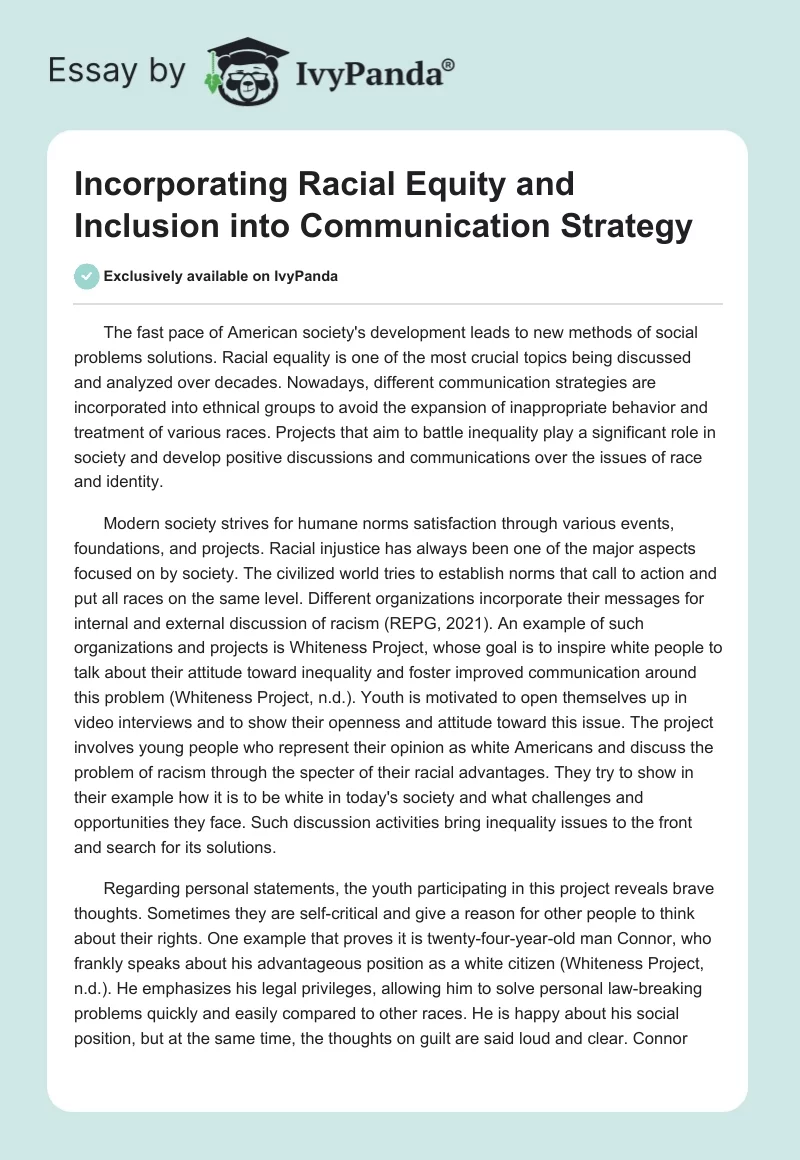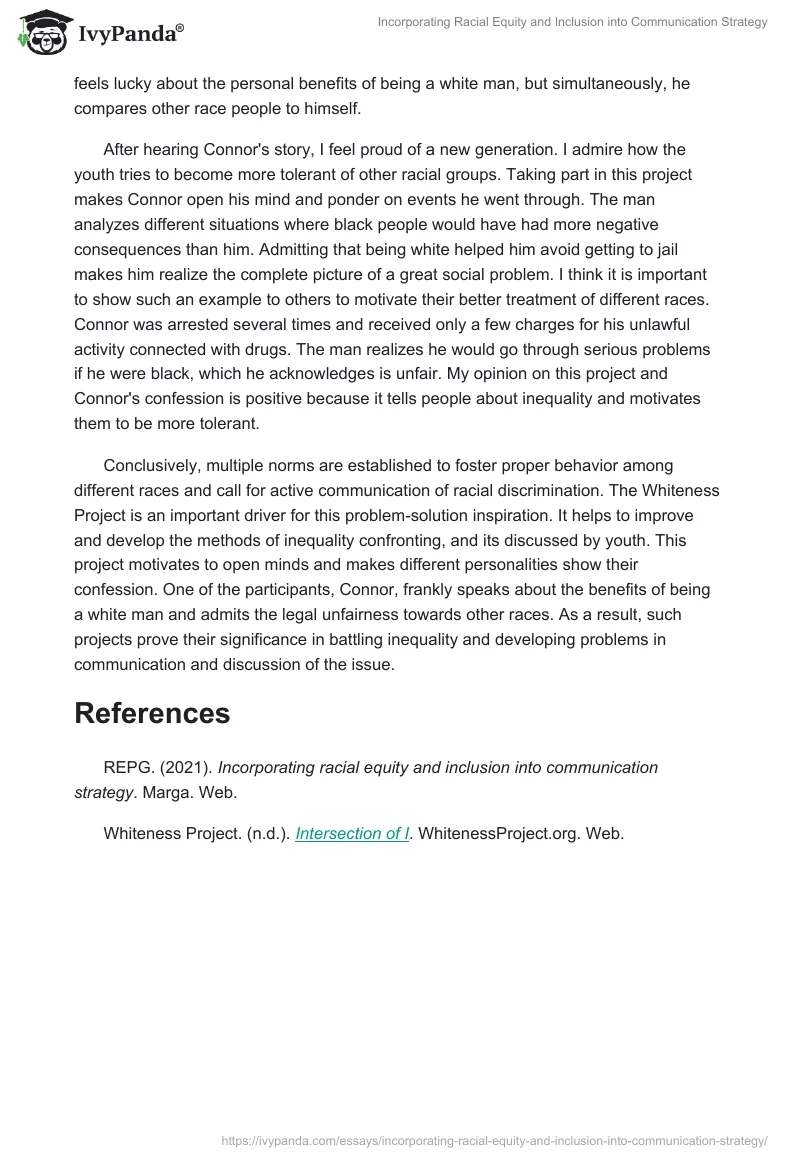The fast pace of American society’s development leads to new methods of social problems solutions. Racial equality is one of the most crucial topics being discussed and analyzed over decades. Nowadays, different communication strategies are incorporated into ethnical groups to avoid the expansion of inappropriate behavior and treatment of various races. Projects that aim to battle inequality play a significant role in society and develop positive discussions and communications over the issues of race and identity.
Modern society strives for humane norms satisfaction through various events, foundations, and projects. Racial injustice has always been one of the major aspects focused on by society. The civilized world tries to establish norms that call to action and put all races on the same level. Different organizations incorporate their messages for internal and external discussion of racism (REPG, 2021). An example of such organizations and projects is Whiteness Project, whose goal is to inspire white people to talk about their attitude toward inequality and foster improved communication around this problem (Whiteness Project, n.d.). Youth is motivated to open themselves up in video interviews and to show their openness and attitude toward this issue. The project involves young people who represent their opinion as white Americans and discuss the problem of racism through the specter of their racial advantages. They try to show in their example how it is to be white in today’s society and what challenges and opportunities they face. Such discussion activities bring inequality issues to the front and search for its solutions.
Regarding personal statements, the youth participating in this project reveals brave thoughts. Sometimes they are self-critical and give a reason for other people to think about their rights. One example that proves it is twenty-four-year-old man Connor, who frankly speaks about his advantageous position as a white citizen (Whiteness Project, n.d.). He emphasizes his legal privileges, allowing him to solve personal law-breaking problems quickly and easily compared to other races. He is happy about his social position, but at the same time, the thoughts on guilt are said loud and clear. Connor feels lucky about the personal benefits of being a white man, but simultaneously, he compares other race people to himself.
After hearing Connor’s story, I feel proud of a new generation. I admire how the youth tries to become more tolerant of other racial groups. Taking part in this project makes Connor open his mind and ponder on events he went through. The man analyzes different situations where black people would have had more negative consequences than him. Admitting that being white helped him avoid getting to jail makes him realize the complete picture of a great social problem. I think it is important to show such an example to others to motivate their better treatment of different races. Connor was arrested several times and received only a few charges for his unlawful activity connected with drugs. The man realizes he would go through serious problems if he were black, which he acknowledges is unfair. My opinion on this project and Connor’s confession is positive because it tells people about inequality and motivates them to be more tolerant.
Conclusively, multiple norms are established to foster proper behavior among different races and call for active communication of racial discrimination. The Whiteness Project is an important driver for this problem-solution inspiration. It helps to improve and develop the methods of inequality confronting, and its discussed by youth. This project motivates to open minds and makes different personalities show their confession. One of the participants, Connor, frankly speaks about the benefits of being a white man and admits the legal unfairness towards other races. As a result, such projects prove their significance in battling inequality and developing problems in communication and discussion of the issue.
References
REPG. (2021). Incorporating racial equity and inclusion into communication strategy. Marga. Web.
Whiteness Project. (n.d.). Intersection of I. WhitenessProject.org. Web.


